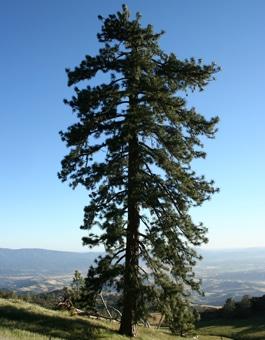

Both beauty and versatility
Ponderosa pines are the second most common tree in Oregon and are dominant in the eastern part of the state. They are easily identifiable by long needles that grow in bundles of three. The wood from a ponderosa pine is quite versatile and can be used from construction to millwork. Trees can live over 700 years. The beauty and colors of old ponderosa pine attract moviemakers and recreationalists alike.
Range
Ponderosa pine occurs in pure stands or may be mixed with lodgepole pine, grand fir, Douglas-fir, western larch, western white pine, incense-cedar, white fir and quaking aspen. Ponderosa pine forests are widely distributed in eastern Oregon, ranging in elevation from 2,500 to 6,000 feet. Ponderosa pine found in the Willamette valley is actually genetically very different than eastern Oregon ponderosa. The historic range of Willamette valley ponderosa pine has been reduced significantly by agriculture and development, but it is also capable of growing on the full range of Valley soils below 1,000 feet elevation. Ponderosa pine grows well with Douglas-fir but also where Douglas-fir can’t: extremely wet soil like that of the Willamette Valley.
Character
Ponderosa pine can reach up to 200 feet in height. The trunks of saplings tend to be black, while those of mature trees are almost always pumpkin orange with visually pleasing splits in the bark.
Understory
The understory consists of grasses and shrubs such as green-leaf manzanita, buckbrush, bitterbrush and snowberry.
Climate
Ponderosa pine forests are the second driest forests in Oregon; they thrive in climates with short, dry summers and cold, snowy winters. The range of these forests is closely tied to soil moisture.
Management
Fire has shaped these forests. Historically, frequent ground fires, both human-caused and natural, maintained open, park-like conditions. Fire suppression during the past 100 years has left many stands overcrowded with more shade-tolerant trees. These forests are now very susceptible to insects and fire. They can be returned to more natural and healthy conditions with a combination of thinning and fire. Removing the entire overstory can lead to extreme soil temperatures and poor regeneration, making it difficult for ponderosa pine to regenerate naturally. As a result, uneven-aged forestry is often practiced, typically with group selection as the harvest technique.